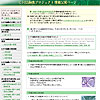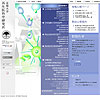National BioResource Project
 Human embryonic stem cells
Human embryonic stem cells
Last update: December, 2009


Center
Institute for Frontier Medical Sciences, Kyoto UniversityNAKATSUJI Norio

〒606-8507 53 Kawara-cho, Shogoin, Sakyo-ku, Kyoto-shi
Tel : +81-75-751-3821
Fax : +81-75-751-3890
Objectives
Human embryonic stem (ES) cells are an important resource with a variety of promising applications in biological, medical and pharmaceutical research. Their role is not only as a source of the various specialized cells that are required in regenerative medicine but also as material for the development of specialized human cell types that are used in tests of safety and efficacy during drug development. They are also used in investigations of the mechanisms of cell differentiation in human embryonic development. Human ES cell lines are created through the destruction of preimplantation embryos that are already determined to be discarded. There is a need for careful ethical reviews when establishing human ES cells has taken place as a part of the National BioResource Project. We have established three human ES cell lines from three blastocysts recovered from a very small number of donated frozen embryos that were created for infertility treatment. After intensive analyses of their properties and testing tem for infections, ES cells were cryopreserved for distribution to researchers. To date, we have distributed our stem cell lines to more than thirty research projects.
Organization
Under construction


Available Resources
KhES-1, KhES-2, KhES-3, KhES-4, KhES-5
Distribution / Deposition
Research Result
| Parkinson’s Disease is an extremely serious and intractable disease which impairs motor functions. It is caused when neurons that produce dopamine begin dying off. Although it has been shown that transplanting dopaminergic neurons has the potential of improving the disease’s symptoms, the neurons used in these transplants are virtually impossible to obtain. So there is a need for a stable source of these cells. Using our ES cell lines, Dr. Sasai and colleagues at the RIKEN Center for Developmental Biology have established a technology for effectively developing dopaminergic neurons from human ES cells. Their technique offers great advantages from the perspective of medical applications because the ingredients used to induce differentiation in their method are not sourced from animals. The Kyoto University and Sasai team has previously demonstrated that transplanting dopaminegic neurons produced from monkey ES cells into monkeys with induced Parkinson’s Disease improved the symptoms of the disease. These results are a major step forward toward the realization of cell-transplantation treatments of Parkinson’s Disease using human Es cells. |




